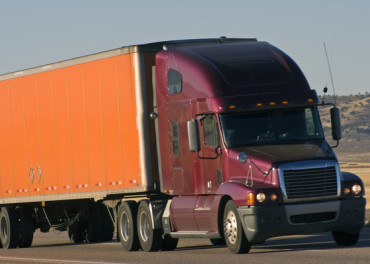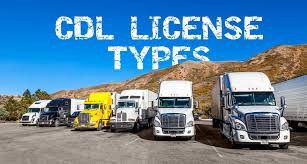Types of the driver’s CDL

Every professional driver knows what a Commercial Driver’s License is. It allows drivers to drive trucks and other massive vehicles with commercial purpose. So, if you are interested in a career as a trucker in one of the enormous companies throughout the U.S., you need to get this license.
CDL Class A
This certificate allows CDL drivers to work with a great variety of vehicles: tractor-trailers, trucks and semi-trucks, tankers, flatbeds and others. It also covers an overwhelming majority of the vehicles from Class B and Class C, so can be considered as universal. The common characteristics of the vehicles is a combined weight of more than 26,000 pounds with a towed power of at least 10,000 pounds.
CDL Class B
This type is more specific and allows a CDL driver to work with buses (most kinds), straight, dump and box trucks (for delivering purposes), plus most C Class vehicles. In any case the requirement in this class is to be a single vehicle. Here we can speak already about the weight of more than 26,000 pounds with the attached cargo zone and a cab and towed power less than 10,000 pounds.
CDL Class C
In this section the vehicles are less powerful – HazMats, tanks trucks, buses and different trailers with a total weight less than 26,000 pounds and a towed power less than 10,000 pounds.
Beside the classes, some jobs for CDL drivers may require additional endorsements on the CDL. For example, for driving a city bus you may be required for endorsement P, meaning allowance to work with passengers (additionally, for school buses may be a requirement for endorsement S). T will stand for tank, meaning you are assigned to deliver liquids, while H will give you an opportunity to deal with hazardous materials.

How to get a CDL drivers’ job?
Obviously, first of all you need to get the certificate. There are a great variety of schools around the country, in every state, that provide you a CDL program. The age of the student must be minimum 21, but here we have some exceptions. Thus, some states have agreed to lower the minimum age to 18 years, but in this case such a driver with CDL can use it only in the state of residence until 21.
Basically, in every state the requirements can vary despite the fact that the certificate itself has the same power across the country. To check particular requirements, you can refer to the local offices of the Department of Motor Vehicles (DMV).
To pass the exam you will need to go through a theoretical check consisting of about 50 questions, followed by a practical check.
A CDL should not be mixed up with a CLP, standing for Commercial Learner’s Permit, which only allows the applicant to study learning.
As soon as you pass all the exams you may start to search for drivers CDL jobs. There is an enormous number of driving companies providing practice for new drivers who just graduated a technical school. Some of them are even funding the applicants to get the CDL certificate with ability to work in this company afterwards. Of course, in this case the first-year salary of the driver will be pretty low, but it’s a great opportunity for those who cannot afford payment for the school.
One more important thing you need to know in this regard is CDL scan. It’s being used by employers all around the U.S.A. to check reviews of drivers they are considering to hire. This irreplaceable tool saves their time and money and helps to avoid hiring unscrupulous employees. As soon as you start your driving career, you may check your rating to get to know your strengths and weaknesses and to improve your professional manner.
With Commercial Driver’s License which was implemented on the 1st of April 1992, the highways became much safer for every road user.
